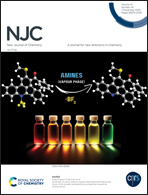Makeup cotton pads derived-hierarchically porous carbon fibers for constructing a free-standing carbon/sulfur hybrid cathode†
Abstract
Low sulfur utilization and poor electronic conductivity of sulfur cathodes have always been the crucial obstacle that reduces the actual high energy density of lithium sulfur batteries. Herein, a makeup cotton pad was employed to design and construct various free-standing carbon/sulfur hybrid cathodes via simultaneous high-temperature activation and carbonization combined with a facile melt diffusion process. A low concentration (≤0.30 mol L−1) of KHCO3 activating reagent was used to facilitate the formation of a porous structure. By systematic regulation of the KHCO3 concentration, the optimized carbon material exhibited interconnected fiber skeletons with a hierarchically porous structure and high specific surface area of 2080 m2 g−1. When used as a self-supporting carbon current collector, the sulfur loading and electronic conductivity were easily improved due to the abundant pore structure and interconnected 3D conductive network while restraining the shuttle effect of polysulfides and promoting the redox conversion of the polysulfides adhered to the porous carbon fiber host. Consequently, the corresponding carbon/sulfur hybrid cathode with a sulfur loading of 3.0 mg cm−2 delivered an initial discharge capacity of 892.4 mA h g−1 and Coulombic efficiency of approximately 100% at 0.2 C.



 Please wait while we load your content...
Please wait while we load your content...